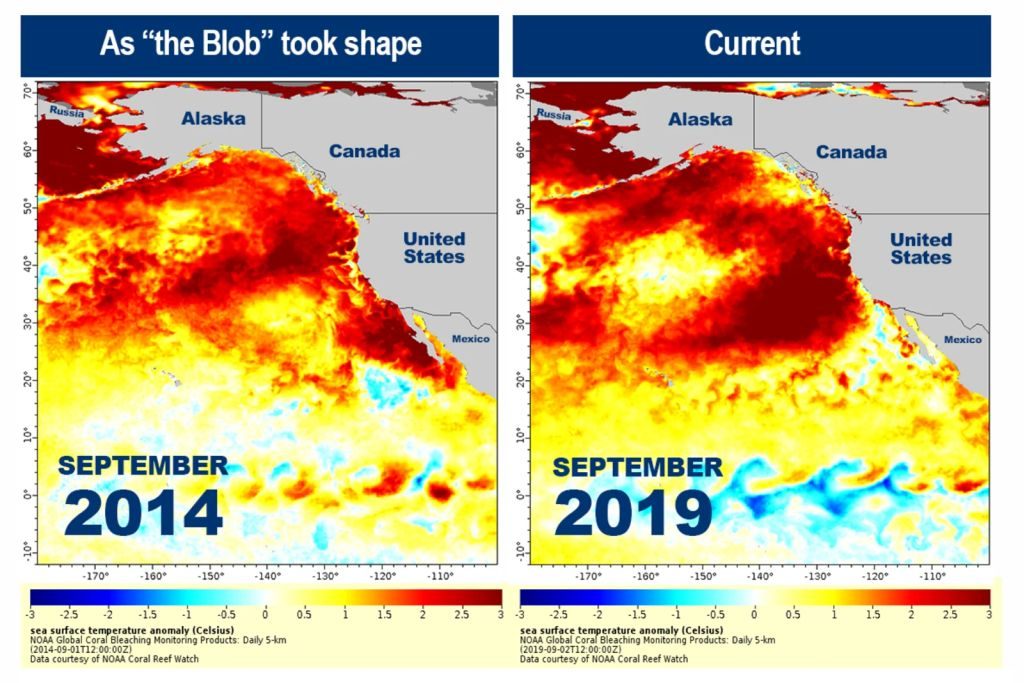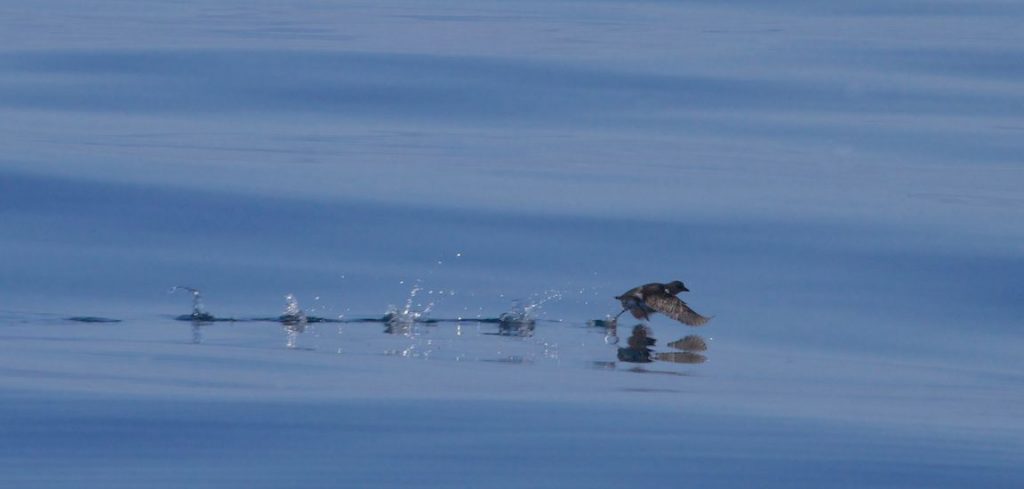
In the fall of 2014 a persistent weather pattern in the northeastern Pacific stopped the normal upwelling of cold water from Alaska to California. Sea surface temperatures rose 7 degrees F.
When that happened, cold water nutrients and organisms stayed too far below the surface to feed the fish, birds and animals that depend on them. Species starved throughout the food chain including crabs, sea stars, salmon, Cassin’s auklets, common murres, and sea lion pups.

This month a similar weather pattern has created a similar temperature anomaly. NOAA says it already ranks as the second largest marine heatwave in the northern Pacific Ocean in 40 years — second only to “the Blob.” (see maps above)
If the weather doesn’t change soon, if the winds don’t pick up and stir the sea, then “The Blob” will be back again and it will be bad news for everything in the northeastern Pacific.
Learn what happened during The Blob of 2014-2015 in this vintage article: Death By Warm Water.
(maps from NOAA, photo from Wikimedia Commons; click on the captions to see the originals)
Meanwhile in Southern California, the ocean temperatures are higher than usual. A few days ago, they reported the sea temperature off LaJolla pier was 11° higher than normal. Not good.
Do you have a picture of what that area looks like in “normal” times? Hard to tell what is different from normal if we don’t have something to compare these pictures to.
Scott, these are anomaly maps so the intensity of color shows how*different* from normal the sea temperature is.